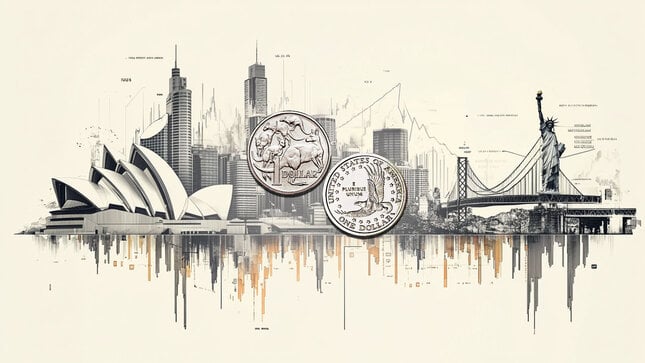And in the blink of an eye, the expectation of a “soft” landing turned into worries about a crash landing!
It was a bloody Monday in the stock market as analysts digested the dreary jobs report released Friday and suddenly discovered the rot in the economy’s foundation. They fretted that the Federal Reserve waited too long to cut interest rates and worried its lallygagging would tip the economy into a recession.
(I have argued for months that the problem started long before the first Fed rate hike. It began when the central bank decided to keep the easy money spigot wide open for more than a decade.)
The carnage in the U.S. stock market was widespread.
-
Dow Jones: -1033.99/ -2.6 percent.
-
NASDAQ: -576.08/ -3.43 percent.
-
S&P 500: -160.23/ -3 percent.
-
Russell 2000: -70.15/ -3.33 percent.
The selloff wasn’t limited to the U.S. Markets around the globe bled red ink. Some $6.4 trillion was wiped off global stock markets. For instance, Japan’s Nikkei 225 Index plunged 13.2 percent as investors absorbed the recent interest rate hike.
It just goes to show how quickly market sentiment can shift.
The reasons for the global selloff went beyond worries about the U.S. economy. As a Bloomberg article put it, investors are coming to terms with the fact that they were operating under a lot of erroneous assumptions.
“One thing is clear: the pillars that had underpinned financial-market gains for years — a series of key assumptions that investors across the world were banking on — have been shaken. They look, in hindsight, a bit naïve: the U.S. economy is unstoppable; artificial intelligence will quickly revolutionize business everywhere; Japan will never hike interest rates — or not enough to really matter.”
So, what happened to Gold?
Gold and silver didn’t escape the carnage.
At its low, the price of gold was down 3.2 percent before rallying later in the day to recover the $2,400 an ounce level. Nevertheless, the yellow metal finished down 1.3 percent on the day.
Silver got pounded even harder, dropping as much as 7.2 percent at its interday low. Worries about an economic slowdown and an ensuing decrease in silver demand hammered the silver price down.
You might be wondering why gold – supposedly a safe haven – dropped during the broader selloff. Shouldn’t a good haven do well amid market chaos?
In fact, the plunge in the price of gold was perfectly normal given the market conditions. Gold often sells off early in a bear market for stocks.
In 2020, gold had a 3 percent decline multiple times in the early days of the pandemic selloff. In October 2008, gold plunged by more than 7 percent in the early days of the financial crisis.
But why?
Precisely because gold serves as a hedge.
Investors often liquidate winning gold positions during a sharp downturn to cover stock losses. But gold generally falls less sharply and recovers more quickly – exactly the scenario that played out on Monday.
Here’s how an analyst explained it to Bloomberg:
“Virtually every time there is marked equities weakness, investors who hold gold as a risk hedge will liquidate part of their holdings to raise liquidity against any potential margin calls. When the dust settles, they almost invariably buy it back.”
Margin calls are a big problem for investors during a sharp stock market downturn. When an account falls below a certain threshold, brokers demand additional deposits of money or securities to bring the account balance up to a required minimum level.
Given gold’s liquidity, investors can quickly sell to raise the cash necessary to cover margin calls.
It’s important to put Monday’s gold selloff into perspective. Even with the downturn, gold hit a record just a few weeks ago, and the yellow metal is still up well over 15 percent on the year with bullish factors firmly in place.
A recession would likely mean deeper and quicker interest rate cuts. As a non-yielding asset, the mainstream tends to view lower interest rates as positive for gold. And of course, a return to easy money is a surrender to inflation. In other words, the inflation dragon will likely be resurrected (if you actually believe he is dead).
As far as silver, an economic downturn would temper industrial demand, and the white metal is much more volatile than gold. But silver is fundamentally a monetary metal, and it tends to track with gold over time. In fact, silver has historically outperformed gold in a gold bull market. For example, during the pandemic, gold increased by about 40 percent, while silver increased by 141 percent.
Whether Monday’s selloff was just a tremor before the earthquake, or the beginning of the great unwind, there are plenty of reasons to be bullish on both gold and silver. These price dips could be viewed as a buying opportunity.
Money Metals Exchange and its staff do not act as personal investment advisors for any specific individual. Nor do we advocate the purchase or sale of any regulated security listed on any exchange for any specific individual. Readers and customers should be aware that, although our track record is excellent, investment markets have inherent risks and there can be no guarantee of future profits. Likewise, our past performance does not assure the same future. You are responsible for your investment decisions, and they should be made in consultation with your own advisors. By purchasing through Money Metals, you understand our company not responsible for any losses caused by your investment decisions, nor do we have any claim to any market gains you may enjoy. This Website is provided “as is,” and Money Metals disclaims all warranties (express or implied) and any and all responsibility or liability for the accuracy, legality, reliability, or availability of any content on the Website.
Recommended Content
Editors’ Picks

AUD/USD holds above mid-0.6300s amid mixed fundamental cues
AUD/USD consolidates near the weekly low touched on Wednesday amid fading optimism over a quick resolution to the US-China trade dispute. Moreover, easing concerns about the Fed's independence assists the USD to preserve its recovery gains registered over the past two days and acts as a headwind for the currency pair.

USD/JPY snaps a two-day winning streak to over one-week high
USD/JPY eases from over a one-week top set on Wednesday and stalls this week's recovery move from a multi-month, though it lacks follow-through selling. Concerns about the US-China trade standoff and the divergent BoJ-Fed policy expectations continue to underpin the JPY, which weighs on the currency pair.

Gold price rallies back to $3,340 area on fading US-China trade deal optimism
Gold price regains positive traction during the Asian session on Thursday and snaps a two-day losing streak to the $3,260 area, or the weekly low touched the previous day. The optimism over a possible US-China trade deal fades quickly and revives demand for the safe-haven bullion.

TRUMP meme coin rallies following announcement of President Trump's upcoming dinner with top 220 holders
Official TRUMP rallied 50% on Wednesday after the team behind the meme coin announced plans for its top 220 token holders to have a dinner with President Donald Trump in May. The announcement also included an extension of the token's initial unlock plan by an additional 90 days.

Five fundamentals for the week: Traders confront the trade war, important surveys, key Fed speech Premium
Will the US strike a trade deal with Japan? That would be positive progress. However, recent developments are not that positive, and there's only one certainty: headlines will dominate markets. Fresh US economic data is also of interest.

The Best brokers to trade EUR/USD
SPONSORED Discover the top brokers for trading EUR/USD in 2025. Our list features brokers with competitive spreads, fast execution, and powerful platforms. Whether you're a beginner or an expert, find the right partner to navigate the dynamic Forex market.